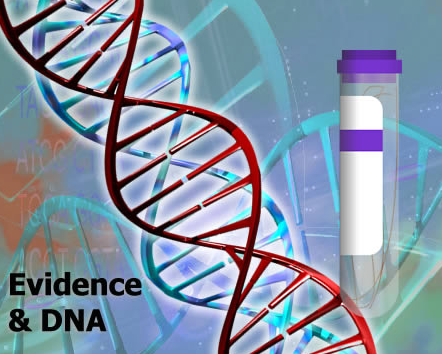Archival Notice
This is an archive page that is no longer being updated. It may contain outdated information and links may no longer function as originally intended.
Home | Glossary | Resources | Help | Contact Us | Course Map
Welcome to the Crime Scene and DNA Basics for Forensic Analysts course
This course provides information in the two lessons Evidence at the Crime Scene and History and Types of Forensic DNA Testing.
The first lesson addresses the importance of documenting, protecting, and preserving the scene and what types of evidence can be found there and methods used for its collection and preservation.
The second lesson addresses the historical use and disadvantages of restriction fragment length polymorphisms (RFLP), the method and sequence of steps in which DNA profiles are developed, and the concept of short tandem repeats (STR) testing and its advantages over earlier methods.
Taking the Course
Starting the course. Select the top link in the navigation on the right.
Navigating the course. We recommend you go through the course page-by-page using the Forward and Back buttons at the bottom of the page. You may skip around and select lessons using the navigation on the right.
Lessons
Information addressed in this interactive training program is delivered in two modules. Select a module below to begin.
| Lesson |
|---|
| Evidence at the Crime Scene |
| History and Types of Forensic DNA Testing |
Additional Online Courses
- What Every First Responding Officer Should Know About DNA Evidence
- Collecting DNA Evidence at Property Crime Scenes
- DNA – A Prosecutor’s Practice Notebook
- Crime Scene and DNA Basics
- Laboratory Safety Programs
- DNA Amplification
- Population Genetics and Statistics
- Non-STR DNA Markers: SNPs, Y-STRs, LCN and mtDNA
- Firearms Examiner Training
- Forensic DNA Education for Law Enforcement Decisionmakers
- What Every Investigator and Evidence Technician Should Know About DNA Evidence
- Principles of Forensic DNA for Officers of the Court
- Law 101: Legal Guide for the Forensic Expert
- Laboratory Orientation and Testing of Body Fluids and Tissues
- DNA Extraction and Quantitation
- STR Data Analysis and Interpretation
- Communication Skills, Report Writing, and Courtroom Testimony
- Español for Law Enforcement
- Amplified DNA Product Separation for Forensic Analysts


